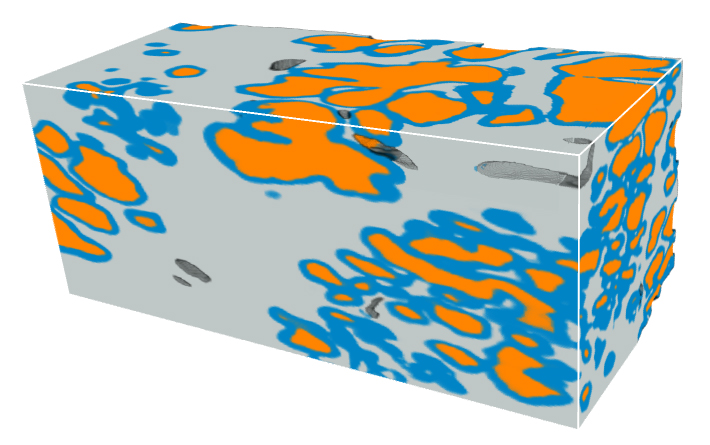| Microscopic glands of the prostate are segmented (colored) with the new deep-learning pipeline; the image shows a prostate cancer tissue volume, measuring roughly 1x1x2 mm in size. The prostate glands form a branching-tree network; orange regions represent the lumen (interior) of the glands, blue regions represent the epithelium (edges) of the glands, and gray regions are the surrounding stroma. The morphology of prostate glands, as viewed on 2D histology slides, is currently the basis for determining how aggressive a cancer is (prognostication), and what treatments are required for individual patients. Accurately segmenting and characterizing these glands in 3D within the context of large 3D pathology datasets has the potential to improve these prognostic determinations and critical treatment decisions. Credit: Rui Wang, University of Washington. |
